Tested: 2021 Hyundai Sonata N Line Powers Up the Family Sedan
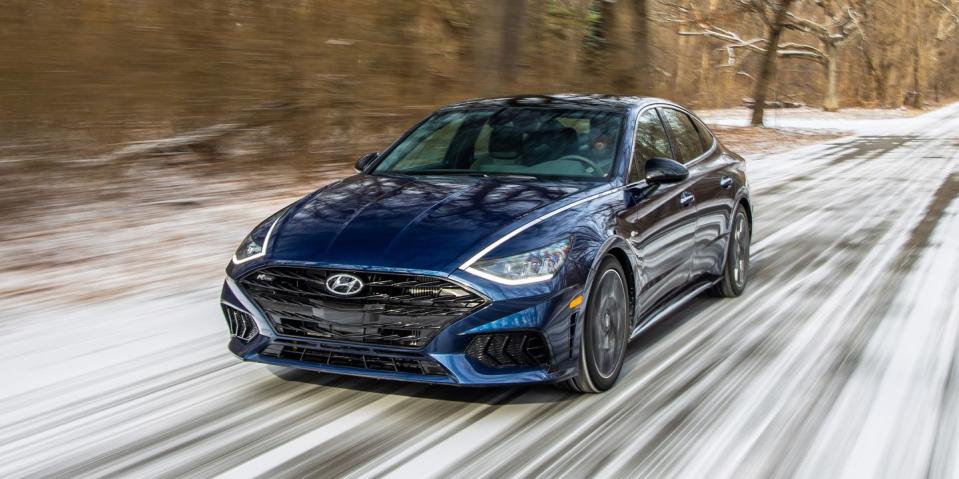
UPDATE 1/14/21: This review has been updated with test results.
Hyundai says its N performance division is named for its Namyang proving ground in Korea and Germany's Nürburgring, but the team involved probably would tell you it stands for No Sleep. Since the Veloster N was introduced in 2018, Hyundai engineers have been a busy bunch of bees developing six more products, including the new 2021 Elantra N Line, the more powerful Elantra N, which will go on sale late in 2021, and three SUVs that are coming soon.
The team's insomnia-suffering speed merchants have also created Hyundai's most powerful front-wheel-drive sedan ever, the 2021 Hyundai Sonata N Line. On sale now, it's the first performance version of the brand's popular mid-size sedan, and it's looking to steal some practicality-minded enthusiasts from the Honda Accord 2.0T, Mazda 6, and Toyota Camry TRD. An afternoon spent driving it around Southern California plus an outing at our Michigan test track tells us it's good enough to do just that.
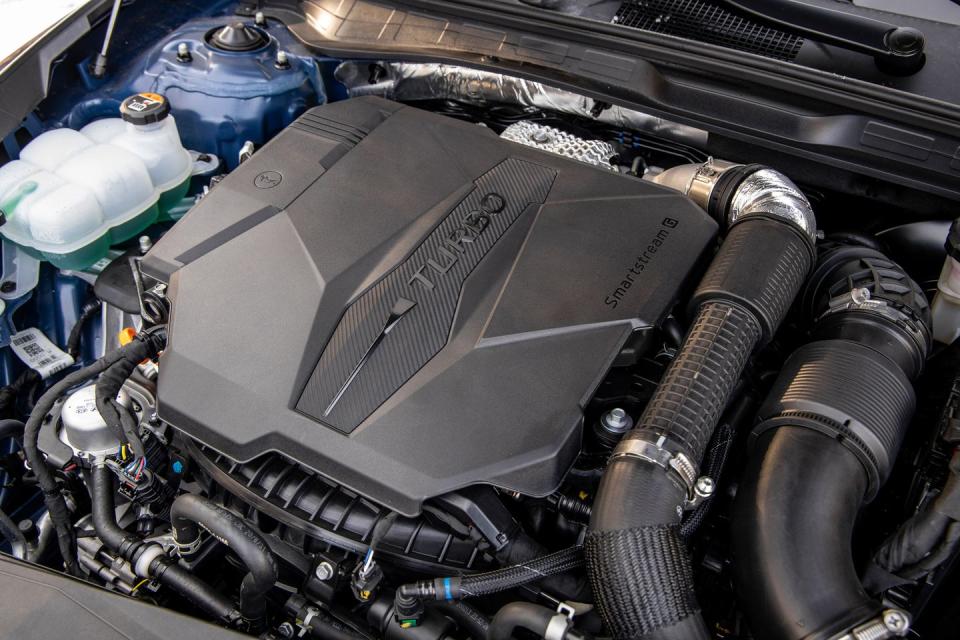
Behind its big blacked-out grille is a new turbocharged 2.5-liter inline-four shared with the Genesis G80 and GV80. The turbo four is also shared with the Sonata's platform mate, the Kia K5 GT. In the Sonata, it pumps out a stout 290 horsepower at 5800 rpm and a burly 311 pound-feet of torque at just 1650 rpm. That's 99 more horsepower and 130 pound-feet of torque more than the Sonata's naturally aspirated 2.5-liter and 110 more ponies and 116 pound-feet over the Sonata's available 1.6-liter turbo four.
To get there, engineers fortified the naturally aspirated 2.5-liter's block, integrated its exhaust manifold into the cylinder head, lowered the compression ratio from 13.0:1 to 10.5:1, and bolted on a turbocharger to swell the intake with boost.
Hyundai also fits its new eight-speed dual-clutch automatic transmission, a gearbox that also pulls duty in the Veloster N, the Kia K5 GT, and in the upcoming Elantra N. Developed in-house, the transmission has a wet clutch pack, is properly responsive, and shifts quickly and smoothly, yet it doesn't feel quite as immediate and snappy as it does in the Elantra N. The first four gears are tightly spaced and well matched to the engine's torque curve, which is high and flat to 4000 rpm. There's some serious midrange power here, and the big four-cylinder pulls well to 6250 rpm.
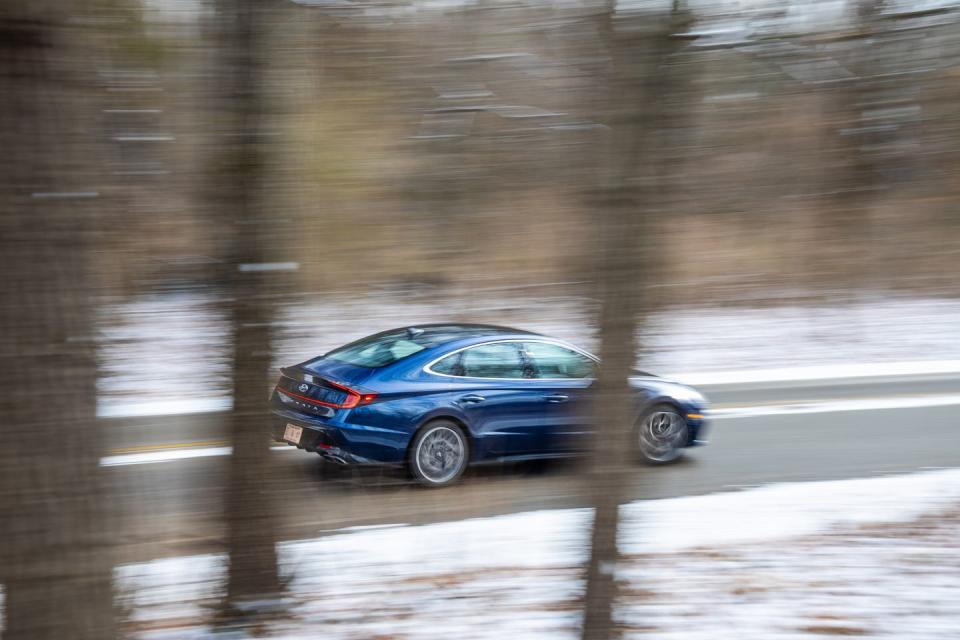
To reduce the time to 60 mph, Hyundai developed a launch-control program that makes drag racing a cinch. Theoretically, launch control optimizes acceleration, but this car’s programming returned inconsistent results and a drop in turbo boost. While our absolute quickest run was computer aided, it was the skill of our driver that resulted in the two-way 60-mph average of 5.0 seconds and 13.6 seconds at 105 mph through the quarter-mile. The N Line is easily the quickest front-drive family sedan we've tested, beating both the Accord 2.0T and Camry TRD to 60 mph by 0.4 and 0.6 second, respectively. This hot Sonata even matches the times set by the now-defunct Ford Fusion Sport, which weighed considerably more than the Hyundai yet employed all-wheel drive and a 325-hp twin-turbo V-6.
After some investigating by Hyundai, they discovered a software glitch that limits torque if too much brake pressure is applied during launch starts. Our test car was a pre-production unit and Hyundai assures us the programming will be recalibrated for production cars. Even without the help of an aggressive launch, though, the Sonata posts an impressive 5-to-60-mph time of 5.2 seconds, illustrating the engine’s quick response and lack of lag. Indulging in the N Line's horsepower limited it to a 23-mpg average while in our care, which is in line with its EPA city estimate. However, it did equal its 33-mpg federal rating on our 200-mile highway fuel-economy test.
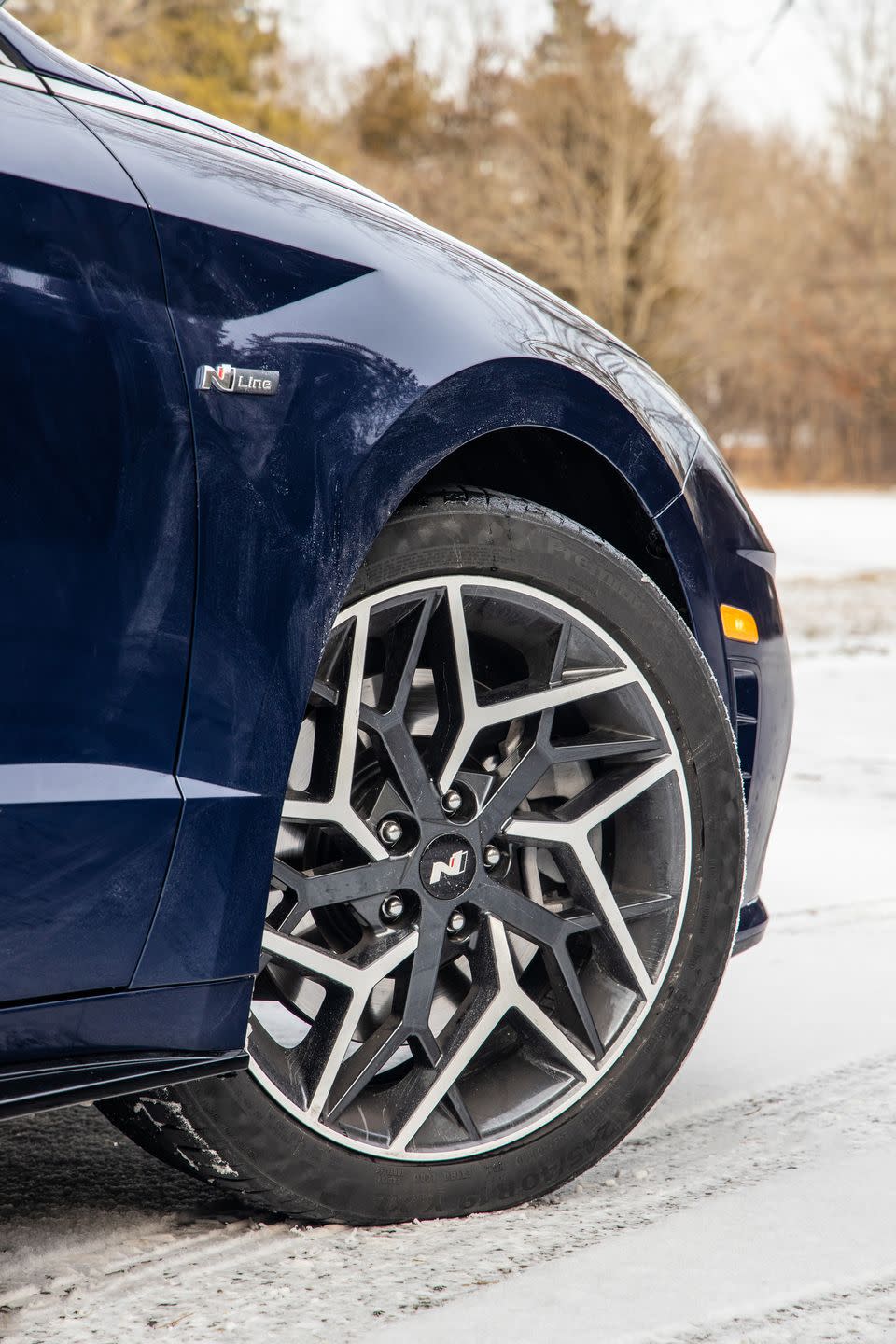
Unfortunately, there is a downside to this Hyundai's newfound power. It's been a while since we've complained about torque steer, but heavy applications of throttle are felt through the Hyundai's steering. It doesn't turn the clock back 20 years, changing lanes on its own at the hit like a supercharged Pontiac Bonneville SSEi—not even close—but you'll know you bought a front-wheel-drive car every time you put your foot down.
All that power churning through the front wheels is apparent on tight mountain roads. Despite meaty Continental Premium Contact 6 summer tires sized 245/40R-19 (Pirelli P Zero All Seasons are standard), the Hyundai has considerably more oomph than forward bite. Engage Sport mode, which disables the Sonata's traction control, and it'll spin its front tires out of tight second-gear corners, generating graceful whiffs of white tire smoke that travel up and over the windshield. It isn't as fun as it sounds as the tires scream and squeal for life. Don't listen to their pleas to slow down. Keep pressing, and the Continentals prove they have more grip to give.
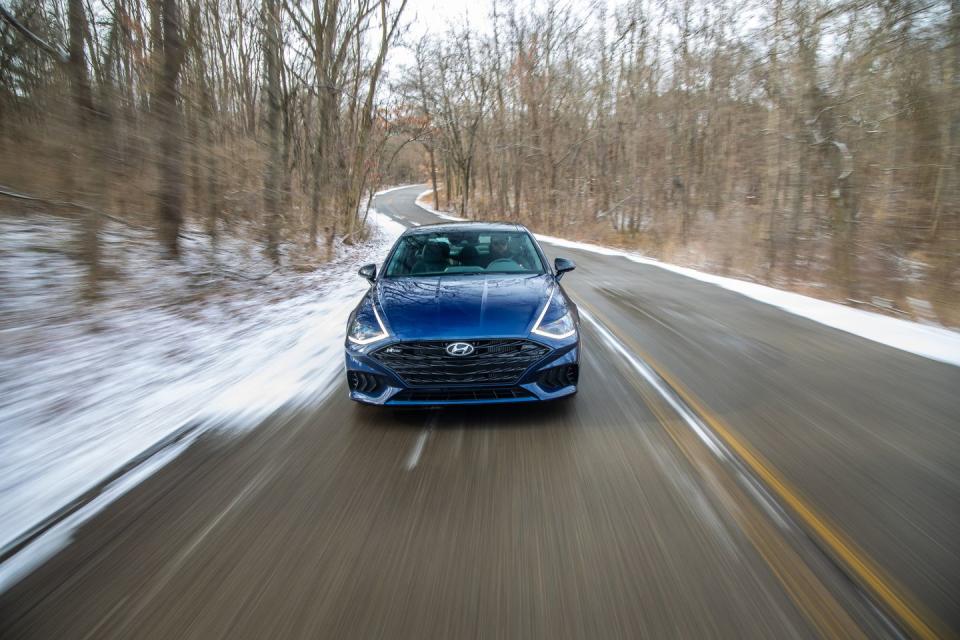
The N engineers also retuned the chassis with significantly stiffer powertrain mounts, firmer dampers, and thicker anti-roll bars. The ride quality is sporty but comfortable, and there's more than respectable steering feel and a sticky 0.93 g of adhesion around the skidpad. The Sonata N Line is capable of real pace on challenging roads, understeering only mildly when you overcook a tight corner, but it's happiest in faster open sections, where it can stretch its legs and put its power down.
Larger 13.6-inch front and 12.8-inch rear brake rotors are also part of the deal and helped our test car post a strong 152-foot stop from 70 mph. The pedal is reassuringly firm around town, and they feel good in the hills right up to the point when they overheat. Our test car weighed 3541 pounds and pulled like a freight train down the straights. We didn't notice any measurable fade at the test track, but the brakes do get a workout halting that momentum. If you're really on it, they can get cooked in just a few miles and the pedal will go soft.
Tweaks to the sedan's interior and exterior are mild but meaningful. Unlike TRD, which has dressed the Camry fast and furiously, Hyundai has taken a more conservative path while still following the sports-sedan dress code. There are a few small N Line badges scattered about and a new front fascia with three large air intakes. Its rump is redressed with four exhaust pipes, a black lower bumper, and, of course, a diffuser. The wheels have a complex 20-spoke design.
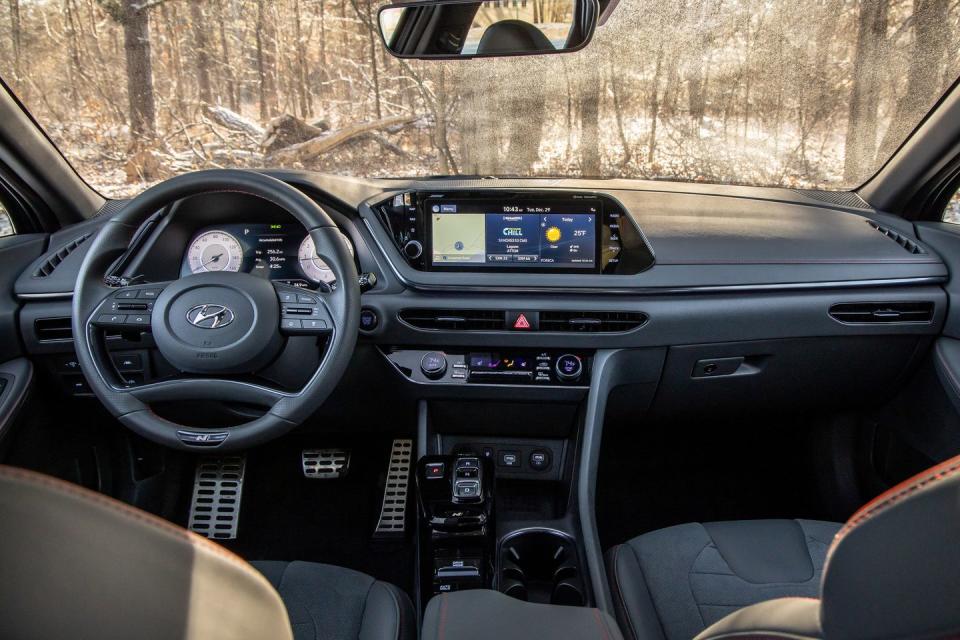
Inside we expected the three-spoke steering wheel from the Elantra N, but the Sonata sticks with the Sonata's four-spoke unit. The push-button shifter also carries over from the regular Sonata. The N Line bits are limited to a nice set of sports seats wrapped in leather and suede. Standard features include a digital gauge cluster that displays simple round dials, a big 10.3-inch infotainment touchscreen, a Bose premium audio system, a panoramic sunroof, and Hyundai's digital key, which can turn your phone into the car's key.
At $34,195, the Sonata N Line is one of the pricier cars in its segment, but the powertrain’s performance is class leading and the handling is entertaining—for a front-driver. Which brings us to the N Line’s biggest problem: A similar outlay of cash buys a rear-drive 255-hp Kia Stinger or 292-hp Dodge Charger, both of which offer a level of sophistication the Hyundai can’t match, but the N Line is a clear winner in the stoplight drags.
You Might Also Like

 Yahoo Autos
Yahoo Autos 